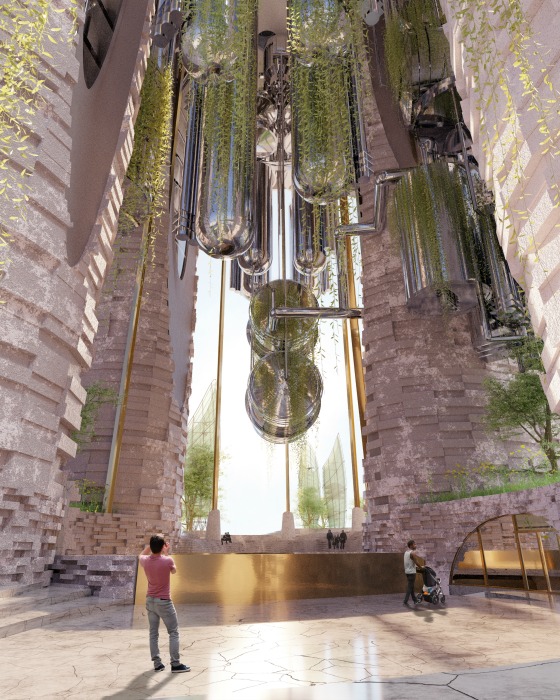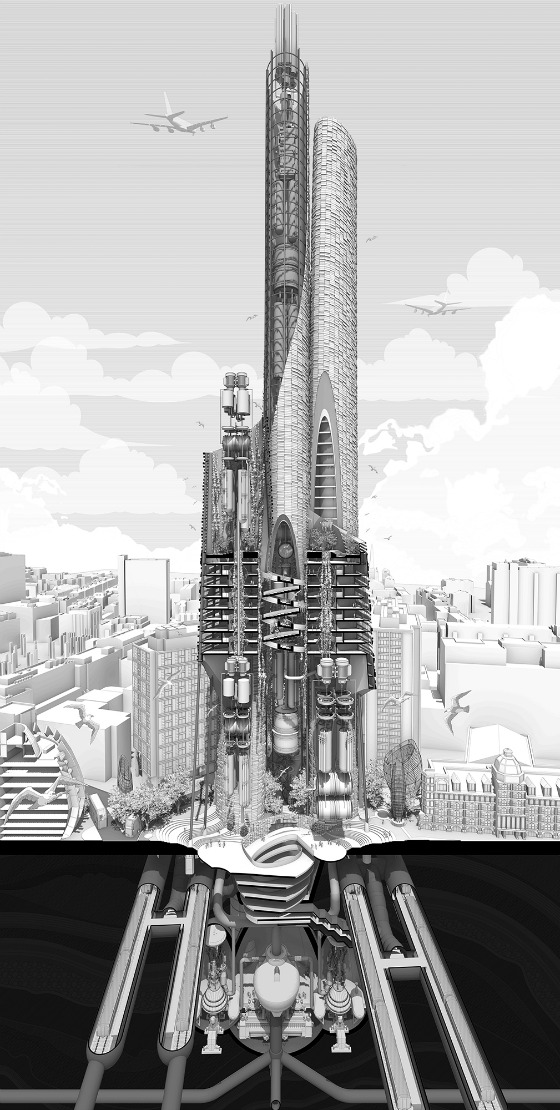A spectacular skyscraper design has earned first prize in a prestigious international competition for an architecture student at De Montfort University Leicester (DMU).

Daniel Hambly is the winner of the SKYHIVE 2020 Skyscraper Challenge, an annual worldwide search for an iconic high-rise tower hosted by Bee Breeders, the leading architecture competition organiser.
The Architecture MArch student impressed the judges with his innovative concept, The Biorefinery. Sited on Old Street roundabout in the London Borough of Hackney, Daniel chose the location for its high levels of pollution and the borough’s pledge to achieve net-zero emissions by 2040.
“As a young designer, winning an international competition like this is particularly significant. It provides a great deal of exposure, which has already acted as a springboard for future opportunities and commissions,” said the 23-year-old from Oxfordshire.

Defined by a unique set of tapering tubular forms, with office and residential spaces, gardens and atria, The Biorefinery is set apart by its mineral-recovery, biogas-production and wastewater-recovery facilities.
Daniel said: “My research showed that Old Street roundabout sits on top of a sewer intersection, which gave me the idea to create the biorefinery within the tower.
“It pumps sewage up to extract clean water from it, followed by a fermentation process that converts the released gas into biofuel which can be used to produce electricity. The remaining solid matter can then be mined for useful materials such as calcium, phosphorus and aluminium.”
The tower includes a combined cooling heat and power module, which uses the waste heat from the biorefinery to heat and cool the building. The electricity produced by the biorefinery could be used to power itself, the offices and homes, with surplus energy feeding back into the grid.

“The thing that set my entry apart is my exploration into how we can live not just alongside systems that produce our energy, but within them. My concept represents a closed system in which a community could be virtually self-sufficient, while powering large parts of the city,” he said.
“Also, the unconventional form and façade material is an eye-catching element to the design, giving it the feel of a sci-fi palace, rather than a conventional power plant.”
RELATED NEWS
New DMU degrees will inspire 'leaders of change'
Top timber competition names DMU architect among UK's finest
Discover what Architecture at DMU offers during our next Digital Open Day
Daniel credits DMU Global – the university’s international experience programme – with playing a significant role in his competition success.
He said: “I can’t thank DMU Global enough for the amazing opportunities. The most memorable was my first-year master’s trip to Singapore and Malaysia, which was pivotal in my architectural understanding.
“Singapore’s handling of high-density architecture was particularly influential in my winning entry, as we were able to personally experience buildings I had previously only read about.”

Alongside his studies, Daniel works as a freelance CGI visualiser for various clients. After graduating from DMU with an Architecture BA (Hons) in 2018, he worked at Fourpoint Architects for a year – completing his Part 1 qualification as an architectural assistant – before embarking on his master’s.
“I first chose DMU because I was made an unconditional offer and I was tempted by the security that gave me. However, since the completion of the Vijay Patel Building after the first year of my degree, DMU now boasts some of the best university facilities in the country,” he said.
“Particularly important are the amazing digital fabrication machines, such as 3D printers and CNC milling machines, and the extremely supportive staff, who help you to bring your projects to life.”
Find more of Daniel’s work at www.dambly.co.uk and connect with him on Instagram @danhambly and LinkedIn.
Posted on Monday 2 November 2020